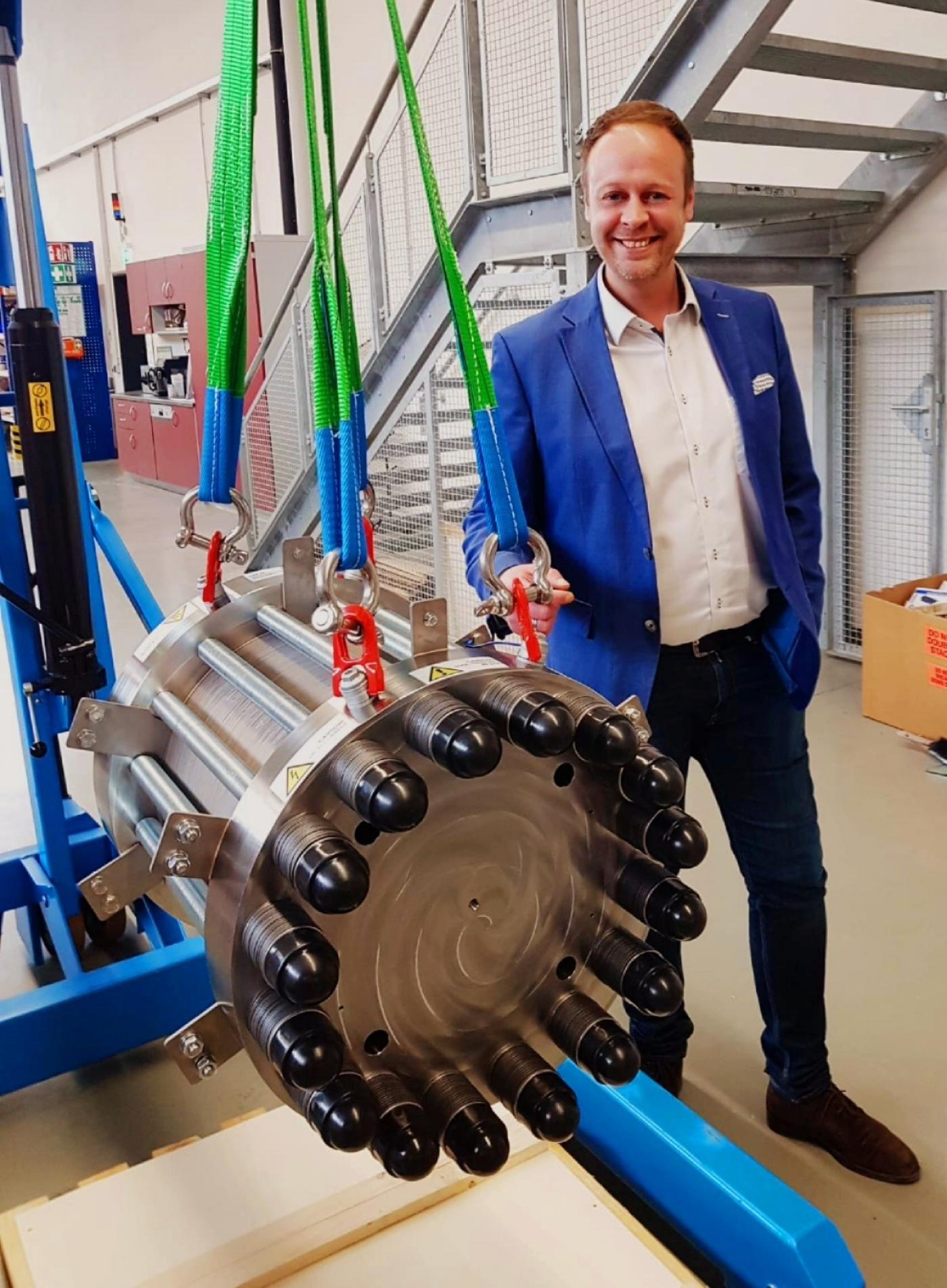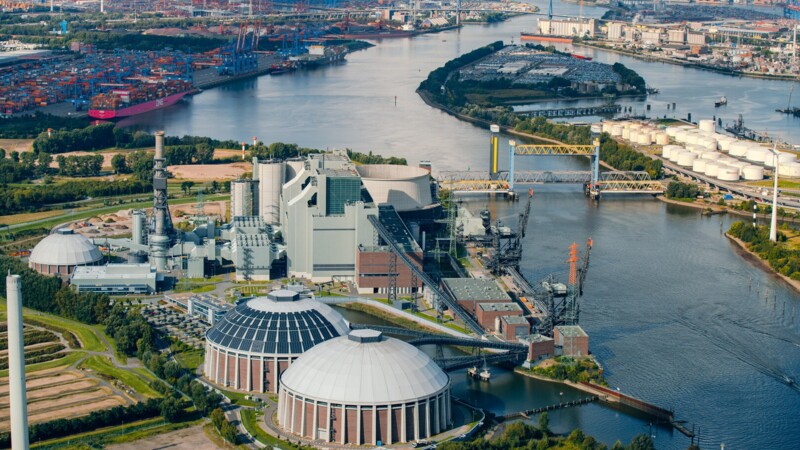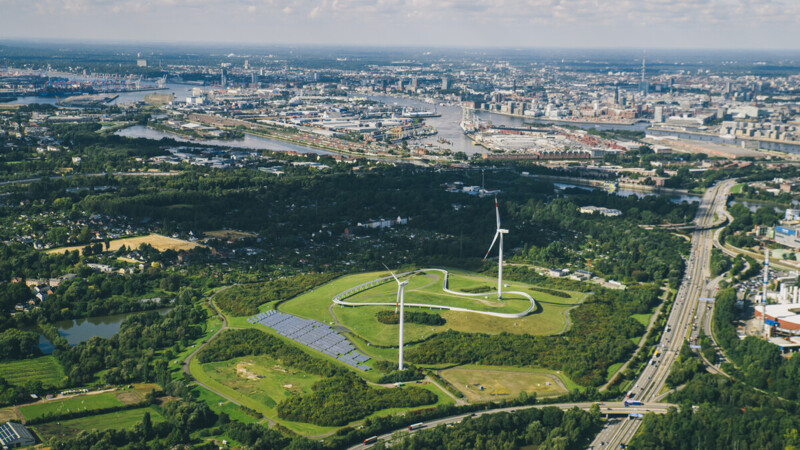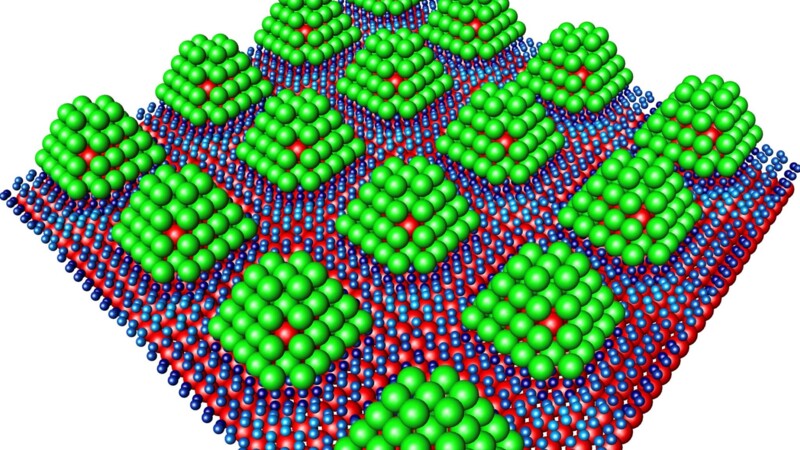"We have driven membrane electrolysis Proton Exchange Membrane (PEM) to market maturity," said Tino Freiheit, Managing Director of HIAT. At the heart of years of development work at the Schwerin Technology Centre is a cylindrical module almost one metre high and 50 centimetres in diameter. This PEM stack generates up to 20 cubic metres of hydrogen per hour with an output of 120 kilowatts. "Our plants achieve efficiencies between 80 and 90 per cent," Freiheit explained. These values are significantly higher than those of so-called alkaline electrolysis, which achieve up to 70 per cent efficiency only. PEM electrolysis is easier to operate with distilled water instead of caustic potash.
Hydrogen is considered an ideal energy carrier that can be used to store large amounts of wind and solar power. Green hydrogen is expected to become the basis of the energy transition and enable climate-friendlier production of steel, chemicals and climate-neutral synthetic fuels for ships and aircraft. Now, developers at Hydrogen and Informatics Institute of Applied Technologies (HIAT) based in Schwerin have successfully split water into hydrogen and oxygen - a process known as electrolysis.
Membrane electrolysis from Hamburg Metropolitan Region
Verdopplung der Produktion angestrebt
Eingesetzt werden die PEM-Stacks aus Schwerin beispielsweise in Windparks, um bei starkem Wind anfallenden, überschüssigen Strom für die Wasserspaltung zu nutzen. „Unsere Kunden kommen nicht nur aus Deutschland, sondern aus aller Welt: Australien, China, Frankreich oder Indien“, sagt Freiheit. Fast 100 seiner PEM-Elektrolysen habe er bisher verkauft. „Und dieses Jahr werden wir die Stückzahl mindestens verdoppeln“, so der studierte Elektrotechniker. Um dieses Wachstum zu bewältigen, wurden jüngst weitere Flächen für die Produktion in Schwerin angemietet und eigens eine Vermarktungsfirma, die Hydrogen Innovation GmbH, gegründet.
HIAT will Marktnische nutzen
Im großen Maßstab bieten auch Technologiekonzerne wie Siemens Energy PEM-Elektrolysen zur Gewinnung von Wasserstoff an. Doch deren Anlagen sind deutlich größer als die HIAT-Stacks und erreichen ein Vielfaches an Leistung im Megawatt-Bereich. Das Schweriner Unternehmen fokussiert sich dagegen auf die Marktnische für kleine, dezentral genutzte Elektrolysen. Klein ist die Konkurrenz für das Unternehmen aus der Metropolregion Hamburg dennoch nicht. Weltweit wird an effizienten Elektrolyse-Anlagen für die Erzeugung von grünem Wasserstoff gearbeitet.

Screen printing processes as a competitive advantage
Manufacturers of electrolysis systems hope to gain a footing on this highly dynamic market. A dozen companies in Germany alone offer electrolysis plants of various sizes, according to the Central Agricultural Raw Materials Marketing and Energy Network (CARMEN. e. V.) in Straubing. "But we have a competitive advantage with our patented and mature screen -printing process," said Freiheit. This method enables HIAT to produce the membranes used in the PEM stack - up to eight square meters per electrolysis - as cheaply as possible. Tiny catalyst particles made of platinum or iridium are spread evenly over the membranes and is exactly what the screen-printing process does well and economically, Freiheit said. Only relatively small quantities of the precious metals, which cost about EUR 150 per gram, are needed for electrolysis. Freiheit and his team now want to extend this lead and reduce the amount of material used in PEM electrolysis without compromising performance.
jol/tn/sb/pb
Sources and further information
More
Similar articles

Moorburg power plant could produce large amounts of green hydrogen

Hamburg presents hydrogen import strategy

